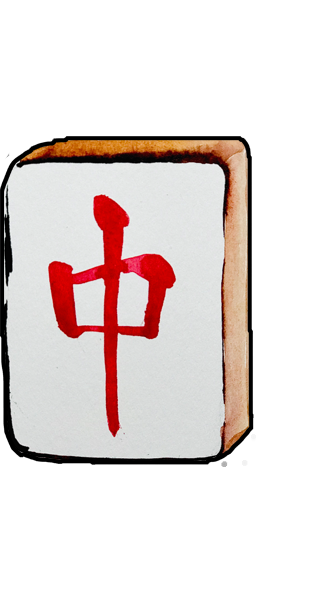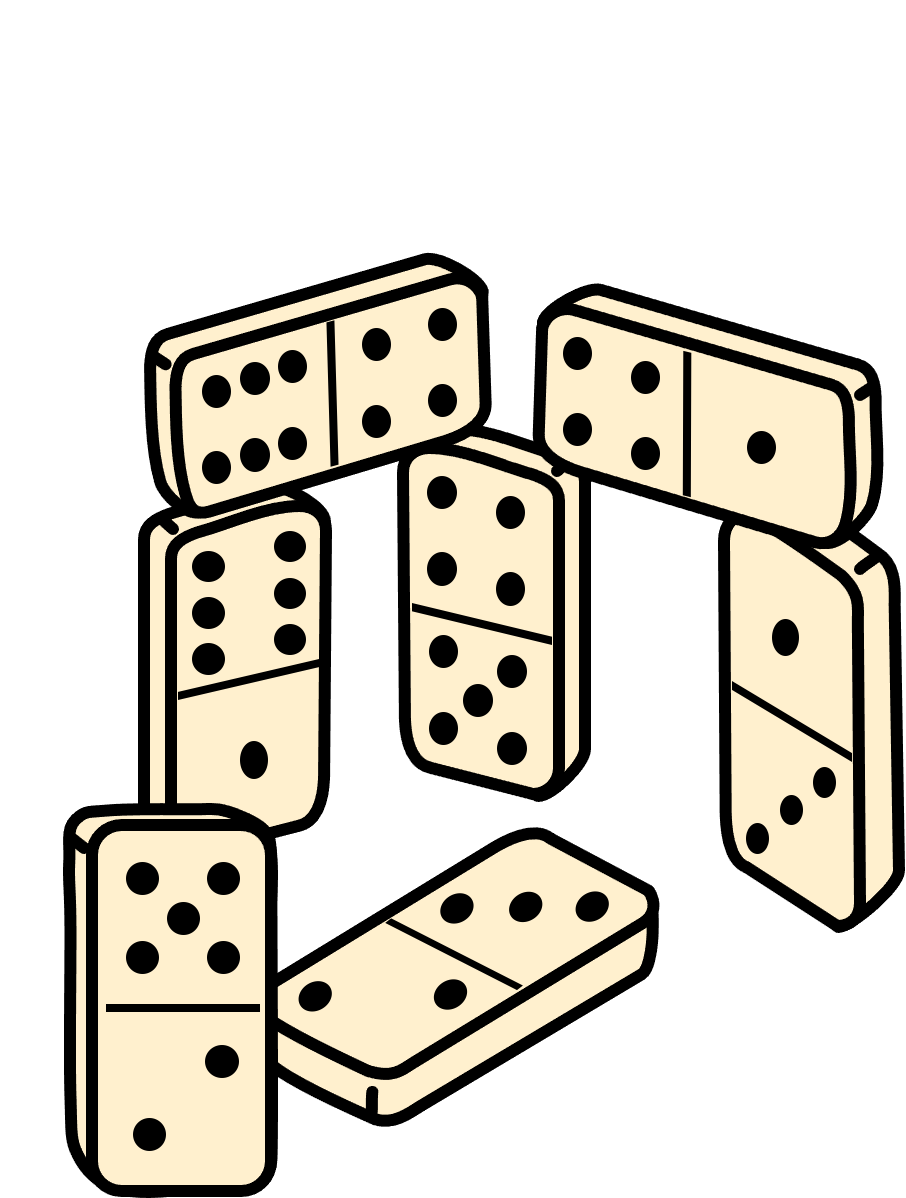Mahjong Madness - Walkthrough
Designed and implemented by Justin Yokota, Joanna Sands, and Ivan Wang
Inspired by:
Mahjong Solitaire

Mahjong

Dominos
This puzzle presents a Mahjong solitaire board, where each tile in Japanese Mahjong is included eight times. As with Mahjong solitaire, tiles can be selected if and only if no tile is directly on top of the tile, and if either the left side or the right side of the tile is entirely empty. Tiles which are identical can be matched, which removes them from the board, and adds one copy of that tile to the hand of whoever took the tiles. Any player can take a pair at any time.
Once a hand reaches 14 tiles, it is evaluated according to the rules of Japanese Mahjong:
- Any valid hand receives 1 point. Any hand which is also a Yakuman receives 2 points.
- Any hand which is not valid receives a chombo penalty of -1 point.
- Furthermore, teams are allowed at any time to redeal the board. This resets everyone's hand and the board, but costs 1 point.
The game is won once a team reaches a collective score of 2 points (for 2 players), 3 points (for 3 players), or 5 points (for 4+ players).
Strategy
One common strategy was to assign one person to receive trash, while other people aim to complete valuable hands.
The following strategy works with 6 players, and guarantees at least 6 points on a single board, assuming the board is solveable under standard Mahjong rules:
- Assign to five people one hand each among: Pin heavenly gates, Man heavenly gates, Sou heavenly gates, 13 orphans, big 4 winds, big dragons, and three Suuankou hands. All 9 of these hands can be made using a single deal of tiles, are all Yakuman, and are maximal (136/14 < 10).
- The sixth person attempts to make another of these hands, but defaults to collecting garbage. In the worst case, there is only ever one pair of tiles to take that yields a Solitaire win, so the sixth person is forced to collect garbage tiles.
- This guarantees that 5 players make Yakuman hands (worth 10 points total), while the sixth person is forced to make at most 4 chombo. This yields the desired total of 6 points.
Author's Notes
JY: Credit to my grandmother for teaching my Mahjong when I visited her a few years back. I always like learning new things in puzzles, and wanted to write a Mahjong puzzle for that. The idea of using Mahjong Solitaire as a means of taking tiles originated with a phone app I played, which asked you to make Mahjong hands Boggle-style.
I found it interesting that this game ended up favoring 7 pair hands over other hands, and got to thinking about how this might affect a game of Mahjong solitaire.
I thus pitched this idea (without the domino connection) fairly early in the Ninteamdo writing process. It then got buried for a while until we had six of the games. At that point, we realized that this idea fit quite well in the planned difficulty curve, so we went forward with this.
Surprisingly, many of our testsolvers recognized standard Mahjong before they recognized the rules of Mahjong solitaire. I think this is more an indicator of our writing team than the general population, but it was rather interesting to see.
We're impressed (and a little terrified) that some teams enjoyed the game enough to continue playing well past the win condition of 5 points, with several teams exceeding 30 points and one team even reaching 100 points. Some of these games continued so late into the night that we had to try and schedule downtime in between 4-5 hour sessions of Mahjong.
Credits
- Background Music: Yostar - Match Theme (from Mahjong Soul)
- Sound Effects: https://elements.envato.com/, https://onlinesequencer.net/, https://soundbible.com/